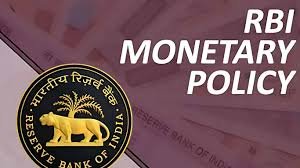RBI Monetary Policy Committee Reshuffling: A Comprehensive Analysis
Introduction to the Reshuffle
The Reserve Bank of India (RBI) recently underwent a significant reshuffling of its Monetary Policy Committee (MPC), which has sparked widespread discussions among economists, policymakers, and market participants. This reshuffle aims to enhance the efficacy of the committee in formulating and implementing monetary policies that cater to the dynamic economic landscape of India.
Changes in the MPC Composition
The new composition of the MPC reflects a strategic move to integrate diverse perspectives into the decision-making process. The committee will now include a mix of experienced economists and financial experts who are expected to bring fresh insights into the challenges facing the Indian economy. This restructuring is seen as a proactive approach to address the complexities of inflation, growth, and employment.
Implications for Monetary Policy
The reshuffling is anticipated to influence the direction of India’s monetary policy significantly. With a focus on controlling inflation and stimulating economic growth, the new committee members are expected to adopt innovative strategies. Analysts predict that this could lead to more robust monetary measures aimed at stabilizing the economy, especially in the wake of global economic uncertainties.
Market Reactions and Stakeholder Responses
Market participants have responded positively to the reshuffle, viewing it as a necessary step towards fostering a stable economic environment. Investors and stakeholders believe that the inclusion of new members will enhance transparency and credibility in the RBI’s policy-making process. Additionally, the reshuffle may instill greater confidence in the market, leading to improved investment sentiment.
Future Outlook
As the new MPC members take their positions, the future of India’s monetary policy is poised for transformation. Observers are keenly watching how the committee will navigate the economic challenges ahead, particularly in light of rising inflationary pressures and global economic shifts. The upcoming policy meetings will be crucial in setting the tone for India’s economic trajectory in the near term.

Why This News is Important
Impact on Economic Stability
The reshuffling of the RBI’s Monetary Policy Committee is crucial for ensuring economic stability in India. With the evolving economic landscape, the new members are expected to address pressing issues such as inflation control and sustainable growth. This reshuffle could lead to more effective policy measures that stabilize the economy during turbulent times.
Enhancing Policy Effectiveness
By introducing a diverse range of expertise, the reshuffled MPC aims to enhance the effectiveness of monetary policy decisions. This is particularly important as India faces challenges such as fluctuating global markets and domestic economic pressures. Effective policy-making is essential for achieving long-term economic objectives.
Confidence in Financial Institutions
Changes in the MPC composition reflect the RBI’s commitment to transparency and adaptability. This could enhance public and investor confidence in financial institutions, fostering a positive environment for economic activities. A stable monetary policy framework can boost investment, leading to economic growth and development.
Historical Context
The Role of the MPC
The Monetary Policy Committee was established in 2016 as part of the RBI’s efforts to institutionalize monetary policy decisions. Its primary objective is to maintain price stability while also considering the growth objectives of the Indian economy. Over the years, the MPC has played a pivotal role in navigating various economic challenges, including inflationary pressures and global financial uncertainties.
Previous Reshuffles and Their Impact
Historically, changes in the MPC composition have been linked to shifts in monetary policy direction. For instance, previous reshuffles have led to decisive actions in interest rate adjustments and inflation management strategies. Understanding this context is essential to grasp the potential implications of the current reshuffle.
Key Takeaways from RBI Monetary Policy Committee Reshuffling
| Serial No. | Key Takeaway |
|---|---|
| 1 | The RBI has reshuffled its Monetary Policy Committee (MPC) to enhance policy effectiveness. |
| 2 | New members will bring diverse expertise to tackle economic challenges. |
| 3 | The reshuffle is aimed at better managing inflation and promoting growth. |
| 4 | Positive market reactions indicate increased confidence in the RBI’s decisions. |
| 5 | Historical context shows that previous MPC changes have influenced monetary policy significantly. |
Important FAQs for Students from this News
1. What is the role of the Monetary Policy Committee (MPC)?
The MPC is responsible for formulating and implementing monetary policy in India. Its primary objective is to maintain price stability while considering economic growth.
2. Why was the MPC reshuffled?
The reshuffle was undertaken to integrate diverse perspectives and enhance the committee’s effectiveness in addressing current economic challenges, particularly inflation and growth.
3. How does the MPC influence the economy?
The MPC influences the economy by setting key interest rates, which impact borrowing costs for consumers and businesses. Its decisions can stimulate or slow down economic activity.
4. What are the implications of the MPC reshuffle for investors?
The reshuffle is expected to enhance market confidence, potentially leading to improved investment sentiment and stability in financial markets.
5. When was the MPC established?
The MPC was established in 2016 as part of the RBI’s efforts to institutionalize monetary policy decisions.
Some Important Current Affairs Links


















 Exciting News!
Exciting News!  Join Our Telegram Channel Now!
Join Our Telegram Channel Now!
 Join our Telegram channel for a thrilling adventure into the world of daily current affairs.
Join our Telegram channel for a thrilling adventure into the world of daily current affairs. 
 Don’t miss out on the latest updates and insights! Click to join now and be part of the knowledge revolution!
Don’t miss out on the latest updates and insights! Click to join now and be part of the knowledge revolution! 
